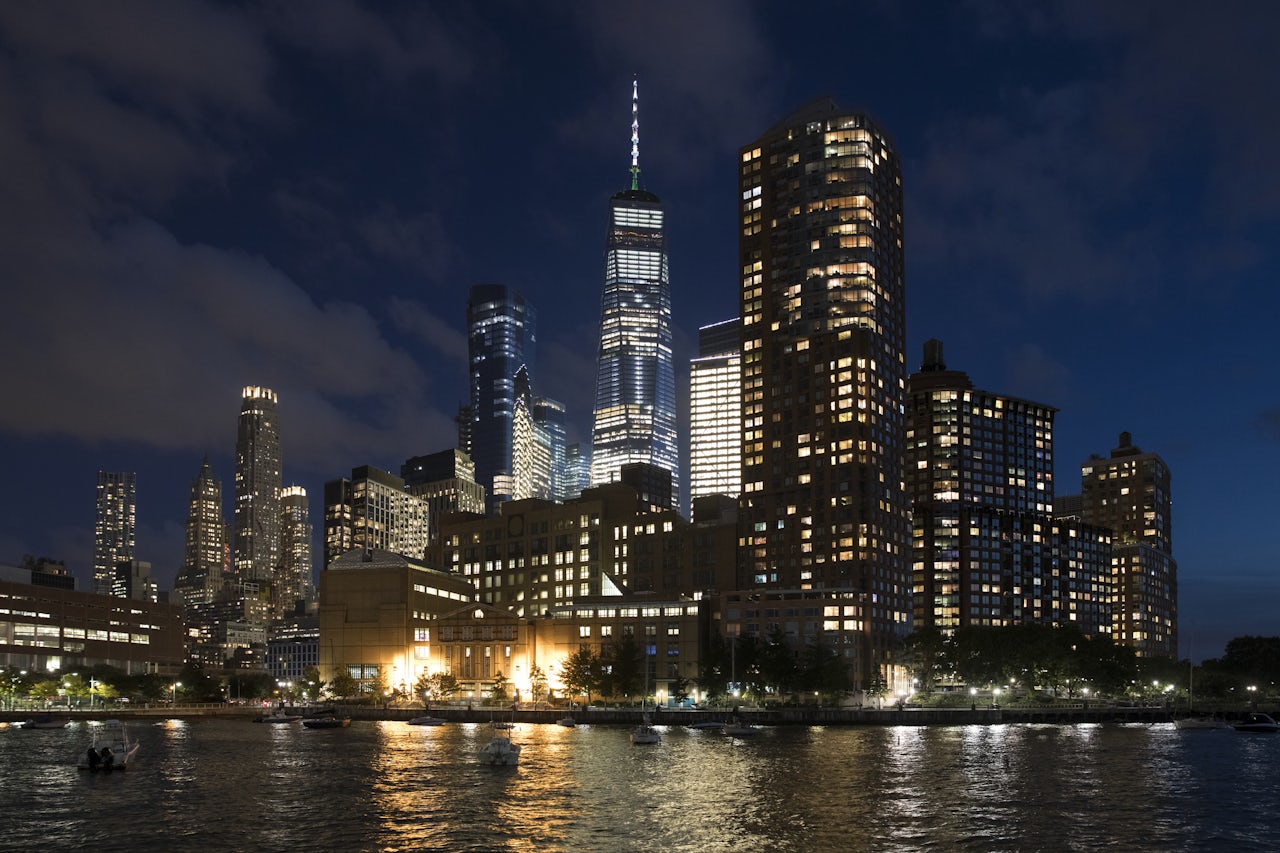I love the New York City skyline. I grew up about 12 miles away in New Jersey, in a town that provides the best view of the city from the west side of the Hudson River. I have loved to look at the skyline from this vantage point and say to myself “damn, New York.” But I also know that the New York City skyline is too bright, and when I think about that, my joy is tempered.
A story published in The New York Times on Thursday reports that it takes 5,200 megawatt hours to keep the Manhattan’s lights powered at night, or the equivalent of about 10,400 60-watt light bulbs left on for an entire year, according to an estimate by the city’s power utility, ConEdison. Furthermore, according to ConEdison director of resource planning and forecasting John Catuogno, “the reality of this is, about 99 percent of those lights need to be on at night.” Airplanes need warning lights on tall buildings to avoid crashes; emergency exit lights in those tall buildings must stay on; streetlights need to keep roads and sidewalks sufficiently navigable.
But does it need to be so bright?
I am writing about New York but I believe this question applies more broadly; maps show that the Washington, D.C., Los Angeles, and pretty much every other major population center in the United States has a light pollution problem. The immediate impact of all this light should be familiar to most people: the sky rarely seems a dark blue or even black, and it’s impossible to pick out more than just a few stars. And of course, there are also substantial health and environmental impacts. Studies link light pollution to depression, sleep issues, obesity and more; there are even signs that light pollution, and the suppression of melatonin specifically, can be tied to breast and colorectal cancers. Further research indicates that light messes with the natural rhythms of wildlife, and could even pose an existential threat to many species of insects.
As ConEdison notes, however, there are some essential functions to having this much light in the night sky. In fact, there are more powerful and efficient LED lights being installed all the time, at home and in public ones that use much less energy than their predecessors. The problem is that this is just substituting one problem for another, by reducing electricity usage at the expense of a more healthily dimmed sky.
The International Dark-Sky Association is the central hub of what’s called the Dark-Sky Movement, (or as I prefer to call it, the Incandescent Dark Web) a network of scientists and citizen activists who fight light pollution. The IDSA’s website offers practical resources for how to light your home and community without using too much light, but this is an incomplete solution at best: light pollution should be understood as a function of public policy, something that can be controlled by government regulation.
The National Conference of State Legislatures says that 18 states have laws (of varying efficacy) on their books addressing light pollution, and even France, home to Paris, the “City of Lights,” several years ago began aggressively restricting which lights can be left on overnight. In January, the French instituted an even stricter rule, and the EU announced its own new guidance earlier this month, efforts that have begun to win over critics of government inaction.
And listen, I get it, I love the New York skyline, I wouldn’t want to change a thing about it. But perhaps we could just turn down the lights a little bit?
